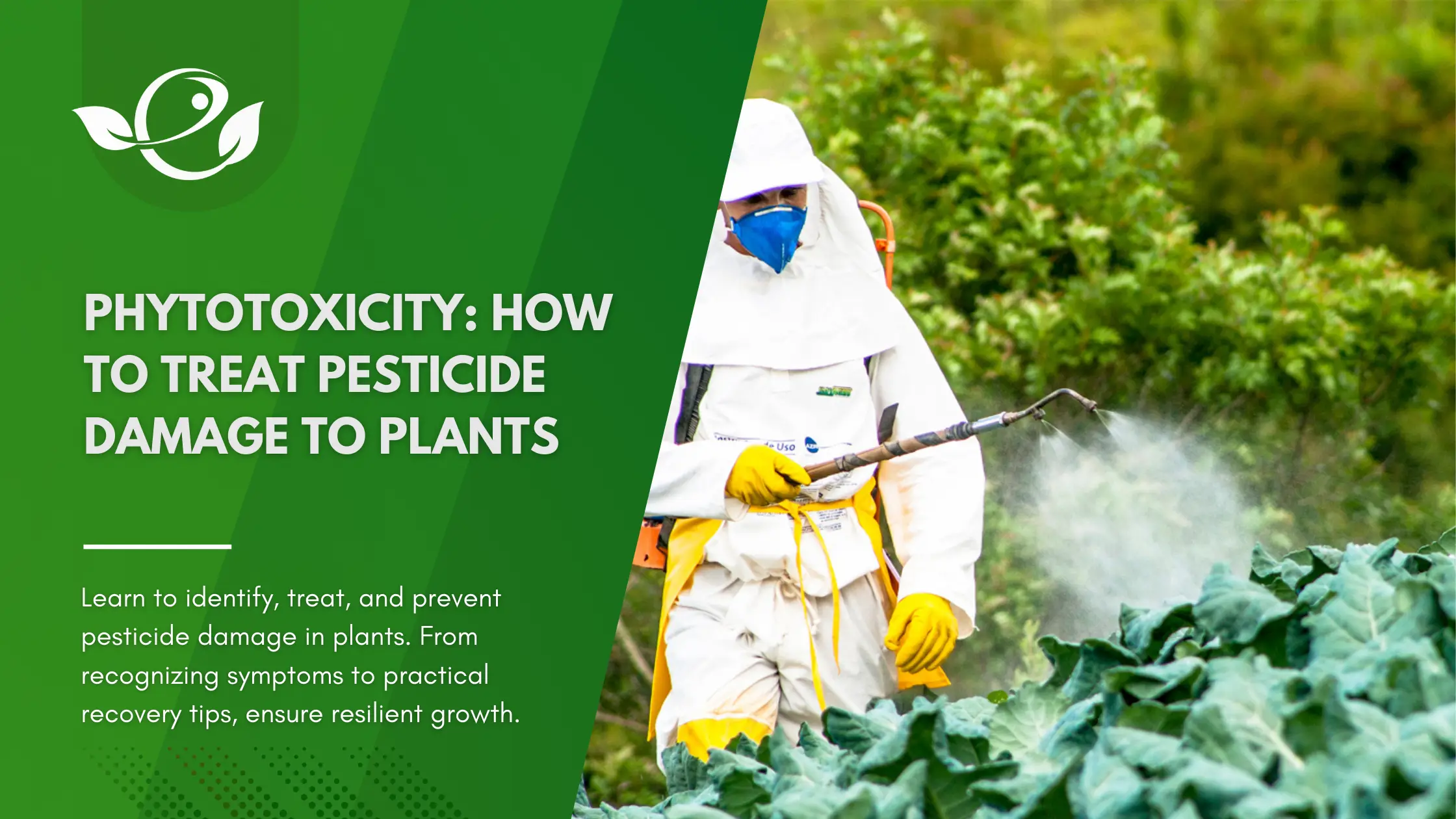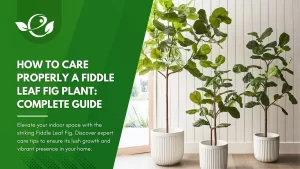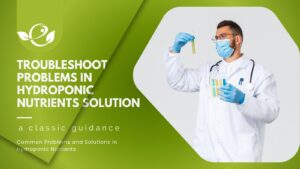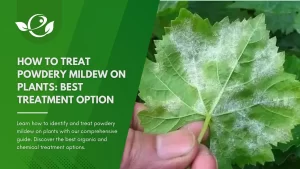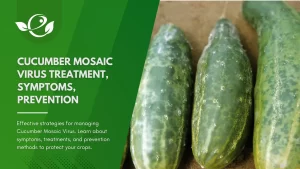Using pesticides is often a necessary step in maintaining healthy plants, controlling pests, and protecting crops from disease. However, when misused, even the most effective pesticides can cause unintended harm, leaving plants damaged, stressed, or in some cases, beyond recovery. Pesticide damage in plants can occur due to over-application, incorrect formulations, or unfavorable environmental conditions, resulting in symptoms such as leaf scorch, stunted growth, and root stress.
Recognizing the signs of pesticide damage early is essential for providing effective treatment and supporting the plant’s recovery. This comprehensive guide will walk you through identifying common symptoms of pesticide damage, practical treatment options, and preventive measures to reduce future risks. Whether you’re a gardener, farmer, or plant enthusiast, understanding how to address pesticide damage is key to fostering a resilient and thriving garden.
Understanding Pesticide Damage
Pesticides are widely used in gardening and agriculture to control pests and diseases, but improper use or accidental exposure can lead to plant damage, known as phytotoxicity. Recognizing what causes pesticide damage, how it manifests, and which plants are most vulnerable can help minimize the risks and ensure safer application practices. Let’s dive into the specifics of pesticide damage and how it can affect plant health.
What Is Pesticide Damage?
Pesticide damage refers to the harmful effects pesticides can have on plants if improperly applied. Common symptoms include leaf burn, stunted growth, and deformed foliage. Recognizing these symptoms early can be critical to plant recovery.
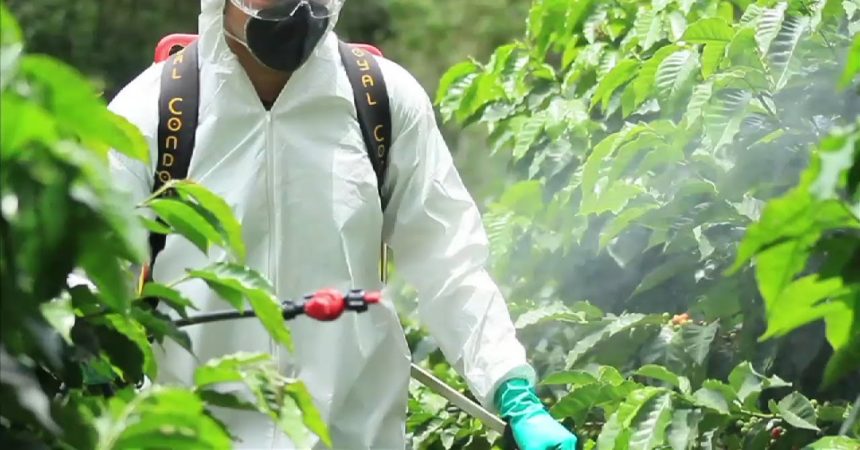
Causes of Pesticide Damage
Understanding the causes of pesticide damage can help prevent it in the future. Here are some of the primary factors that contribute to pesticide damage:
- Overuse or Misuse:
- Excessive Application Rates: Applying more than the recommended amount can lead to toxic buildup, especially in sensitive plants.
- Incorrect Formulations: Using undiluted concentrates or applying a pesticide meant for other crops can be harmful.
- Reapplication Frequency: Reapplying pesticides too soon, without allowing plants to recover, can lead to cumulative damage.
- Weather and Environmental Conditions:
- Temperature: Pesticides are often more potent in hot weather. High temperatures can intensify the effects, leading to leaf burn or curling.
- Humidity: High humidity can cause chemicals to linger on plant surfaces, increasing absorption and potential harm.
- Wind: Spraying pesticides on windy days can lead to drift, affecting non-target plants and increasing the risk of damage.
- Pesticide Drift from Nearby Areas:
- Pesticide drift can occur when pesticides sprayed on one area are carried by the wind to other plants, causing unintentional exposure.
- Example: Herbicides sprayed on lawns can drift to nearby vegetable or flower gardens, leading to leaf curling or discoloration on sensitive plants.
- Plant Sensitivity to Chemicals: Some plants, especially young or delicate varieties, are naturally more sensitive to pesticides. For example, vegetables like tomatoes and peppers are more susceptible to herbicide damage than other crops.
Types of Pesticides Commonly Causing Damage
Different types of pesticides can affect plants in unique ways. Here are the types of pesticides that most commonly cause plant damage:
- Herbicides
- Herbicides are designed to kill or suppress plant growth, which makes them particularly hazardous to non-target plants if misused.
- Non-Selective Herbicides: These affect all plants they come into contact with, so drift or accidental exposure can harm any nearby vegetation.
- Selective Herbicides: These target specific plant types but can still cause damage to non-target plants if not applied correctly.
- Insecticides
- Though intended for pest control, insecticides can impact plant tissues when applied excessively, especially on sensitive plants or in hot weather.
- Common Symptoms: Leaf spotting, discoloration, and minor leaf burn.
- Organic Insecticides: While generally safer, organic insecticides can also cause damage if misapplied, especially those containing oils or soaps that might coat leaves and block sunlight.
- Fungicides
- Fungicides protect plants from fungal diseases but can also cause phytotoxicity, particularly in high humidity or sunlight conditions.
- Sulfur-Based Fungicides: These can cause leaf burn if applied in high temperatures.
- Copper-Based Fungicides: Known for causing leaf spotting or marginal burn, particularly on young plants or seedlings.
Symptoms of Pesticide Damage in Plants
Understanding the signs of pesticide damage is crucial to providing timely and appropriate treatment. Here’s an in-depth look at the symptoms and how to distinguish pesticide damage from other plant issues.
1. Visible Symptoms of Pesticide Damage
- Leaf Discoloration
- Yellowing (Chlorosis): A common sign of pesticide toxicity, especially from herbicides. Leaves may yellow uniformly or in patchy patterns.
- Browning and Bleaching: Leaves might develop brown or white spots, often starting at the edges. This damage usually indicates excessive exposure to sun-sensitive pesticides or drift.
- Leaf Curl, Scorch, and Spotting
- Leaf Curl: Leaves may curl upwards or downwards, depending on the type and concentration of pesticide. This symptom is particularly common with growth-regulating herbicides.
- Leaf Scorch: The tips and edges of leaves become scorched or burnt. This is especially common with pesticides applied on hot or sunny days, where heat amplifies the damage.
- Spotting or Speckling: Small, irregular brown or black spots on leaves can be the result of pesticide droplets. Look for patterns that match recent applications (e.g., spray spots).
- Stunted or Distorted Growth
- Shortened Stems or Branches: The plant’s stems may appear unusually short or stunted, a sign of growth inhibition from pesticide exposure.
- Deformed Foliage: Leaves may be smaller than usual or have irregular shapes. Twisted or misshapen leaves are often seen with hormone-based pesticides.
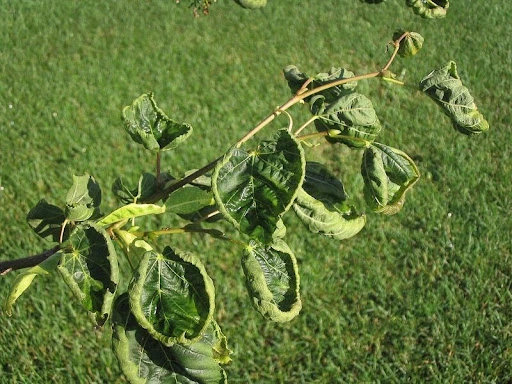

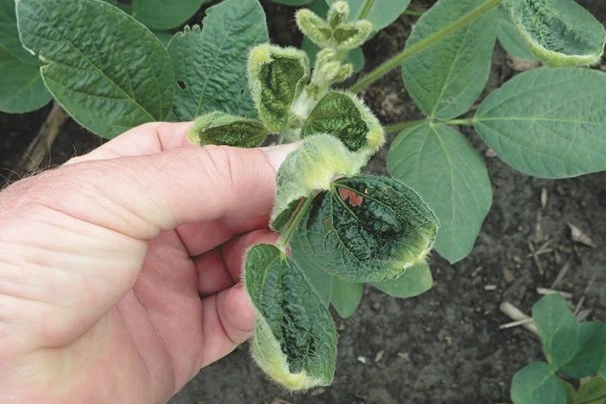
2. Other Signs of Pesticide Stress
- Premature Leaf Drop: If a plant begins shedding leaves prematurely, especially younger ones, it may indicate root or systemic damage from pesticide uptake.
- Wilting and Root Damage
- Wilting: Despite adequate watering, pesticide-damaged plants may wilt. This can happen if roots are affected, limiting the plant’s ability to absorb water.
- Root Browning or Decay: Roots exposed to pesticides may turn brown, soften, or show signs of decay, leading to long-term water uptake issues.
- Reduced Flower and Fruit Production: If a plant stops flowering or produces fewer fruits, it may be due to pesticide stress. Flower buds may also drop off prematurely or fail to develop.
3. Distinguishing Pesticide Damage from Other Problems
- Timing and Recent Applications: Consider if pesticides were applied recently. Symptoms appearing within days of an application are likely pesticide-related.
- Symptom Patterns and Distribution:
- Pesticide Damage: Often appears in distinct patterns, such as spray spots or uniform yellowing.
- Diseases: Tend to spread irregularly, with specific characteristics like fungal spores or bacterial lesions.
- Nutrient Deficiencies: Commonly affect older leaves first and tend to show gradual changes.
- Identify Sensitive Plants: Some plants (e.g., tomatoes, peppers) are highly sensitive to common herbicides and may show symptoms with even minimal exposure.
How to Treat Pesticide-Damaged Plants
When pesticide damage is detected early, proper treatment can often minimize long-term harm. Follow these steps for effective recovery:
1. Immediate Steps After Detecting Damage
- Stop Further Pesticide Applications: If you suspect damage, discontinue any pesticide applications immediately to avoid compounding the problem.
- Rinse Plants with Water: Use a gentle spray of water to rinse affected plants, especially if damage appears shortly after application. This may help dilute and wash away surface residues.
- Tip: Rinse during early morning or evening to prevent further stress from sun exposure during rinsing.
- Prune Damaged Leaves and Stems
- Carefully remove damaged or wilted leaves to reduce the plant’s stress and redirect energy toward recovery.
- Dispose of Damaged Plant Material: Avoid composting pruned leaves, as they may contain pesticide residues that could harm other plants.
2. Provide Proper Care for Recovery
- Deep Watering: Water the plant deeply to help leach pesticides from the soil, especially for root-damaging chemicals. A slow, thorough soaking helps flush out chemical residues from the root zone.
- Fertilization for Growth Support
- Balanced, Slow-Release Fertilizer: Apply a low-concentration fertilizer to encourage new growth. Be cautious with high-nitrogen fertilizers as they may increase stress.
- Tip: Fertilize after rinsing or a heavy watering session to prevent burning roots with concentrated nutrients.
- Mulching: Add organic mulch (e.g., straw, compost) around the plant’s base to retain moisture and protect roots. Mulching can help create a stable environment for root recovery and encourage beneficial microbial activity.
3. Soil Detoxification Techniques
- Activated Charcoal: Mix activated charcoal into the soil around affected plants. Charcoal absorbs and binds harmful chemicals, which may reduce further absorption by roots.
- Gypsum Application: For clay soils prone to holding onto chemicals, adding gypsum can improve soil structure and promote better drainage, helping to leach chemicals from the root zone.
- Compost Addition: Introducing organic compost enriches the soil and promotes beneficial microbes that can break down pesticide residues, enhancing soil recovery.
- Soil Testing (Optional): Consider testing your soil for chemical residues if pesticide damage is frequent. This can help identify any persistent chemicals affecting plant growth.
4. Foliar Treatments to Boost Health
- Seaweed Extract or Fish Emulsion: Spray seaweed extract or diluted fish emulsion directly onto leaves. These provide micro-nutrients and growth hormones that help plants recover from stress.
- Homemade Organic Sprays: A light mixture of compost tea can be used as a foliar spray to provide beneficial microorganisms and nutrients. Ensure the solution is well diluted to avoid burning leaves.
- Timing and Frequency: Apply these foliar treatments every 7-10 days until the plant shows signs of recovery.
5. Using Biostimulants and Stress-Relievers
- Amino Acid Sprays: Amino acid-based sprays are known to improve stress tolerance and aid plant recovery. Look for products labeled for “plant stress” or “pesticide recovery.”
- Natural Growth Regulators: Apply growth regulators like humic or fulvic acids, which are natural products that stimulate plant root and shoot growth, improving resilience and promoting new healthy growth.
- Consider Mycorrhizal Fungi Products: Mycorrhizal fungi form beneficial partnerships with plant roots, enhancing nutrient and water absorption, particularly valuable for damaged plants. These can be applied as root dips or soil drenches.
6. Monitoring and Adjusting Care as Needed
- Observe for New Growth: New leaves and growth are a positive sign. Monitor for color, shape, and size to assess recovery.
- Limit Fertilizer Application: Avoid heavy fertilization while the plant recovers. Over-fertilizing can lead to further stress, particularly with roots still adjusting after pesticide exposure.
- Minimize Additional Stress Factors: Avoid transplanting or pruning severely stressed plants. Reducing overall plant handling during the recovery period can improve outcomes.
Conclusion
Effectively treating pesticide damage in plants requires prompt action, proper care, and a commitment to sustainable gardening practices. By recognizing symptoms early, providing supportive care through appropriate watering, fertilization, and soil treatments, and using organic or gentler alternatives where possible, you can help your plants recover and thrive despite the setback.
Prevention is equally critical in protecting plants from future harm. Practicing correct pesticide application techniques, monitoring plant health regularly, and choosing environmentally friendly products can drastically reduce the risk of pesticide-related stress. Gardening is a balance between protecting plants from pests and nurturing their growth, and with mindful use of pesticides, you can ensure both protection and vitality. Empowered with these strategies, you’re well-equipped to manage pesticide damage and cultivate a healthy, flourishing garden season after season.
